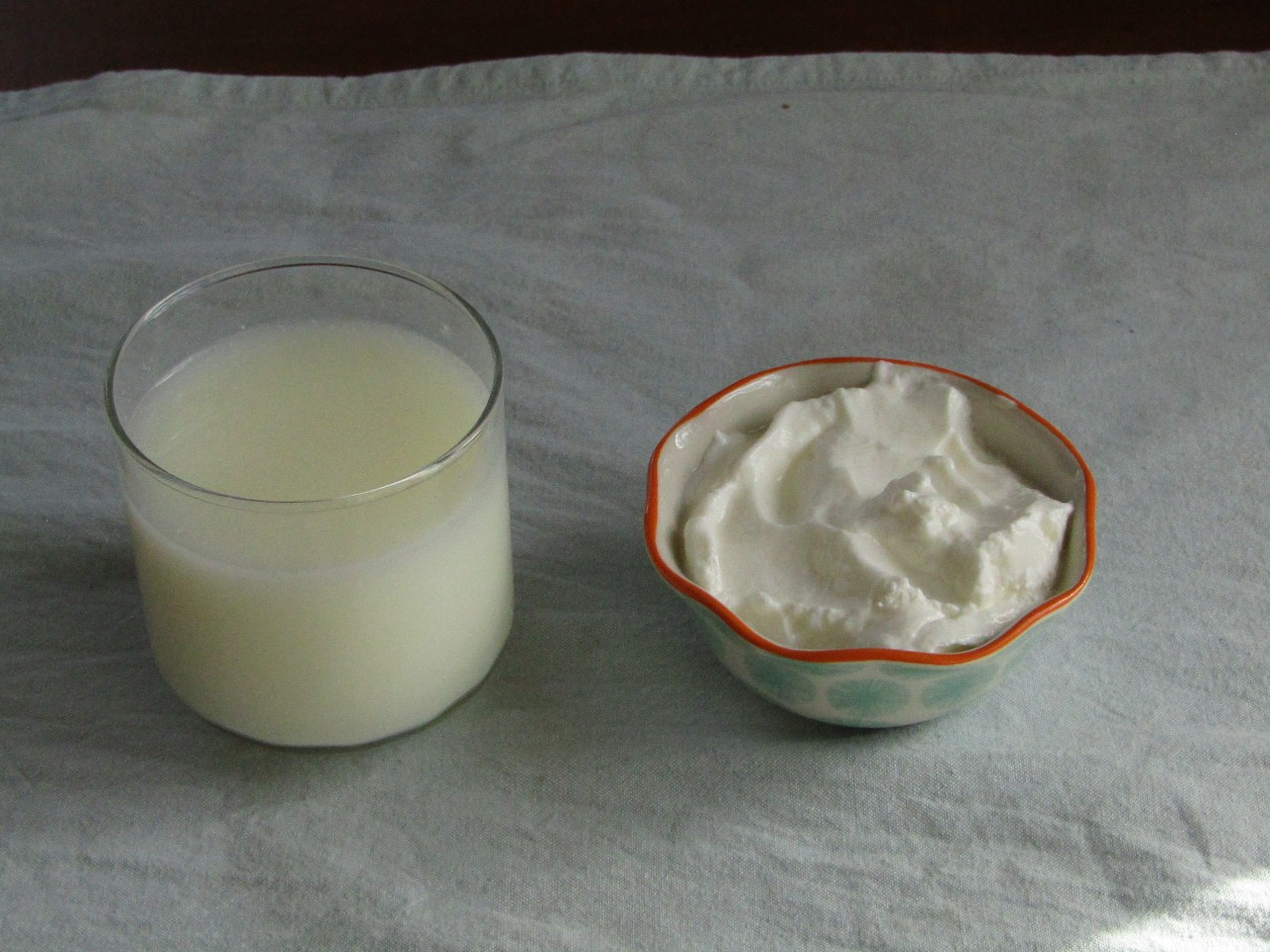This post contains affiliate links.
Many people get confused when it comes to milk kefir and water kefir. Not knowing the differences between the two results in questions like:
Can you make water kefir with milk kefir grains? And vice versa. Or are milk kefir grains the same as water kefir grains?
Milk kefir and water kefir are fundamentally different but also fundamentally the same. The grains to make them are made up of different bacteria species and strains of lactic acid, acetic acid bacteria and yeast species which produce granular structures as a form of protection and environmental control.
Water kefir grains are found in a cactus plant and have been used for centuries to produce water kefir by fermenting sweetened water into a slightly effervescent tangy drink. The grains are small clear nodules which multiply slowly when fed regularly with a sweet liquid made up of mostly glucose and fructose.
Milk kefir grains have not been found in nature and are a bit of a mystery. Their origin is the Caucasus Mountains where they were protected by jealous tribes who believed that the grains had special powers to make them feel good and be successful and it was bad luck to share the “secret” of the grains.
They are used to ferment milk sugar made up of glucose and galactose to acidify the milk, slightly thickening it into an easily digested milk product.
Milk kefir and water kefir physical differences
Milk kefir grains are white structures which resemble cauliflower when they get large. They are soft and rubbery and often surrounded by a stringy biofilm which protects the grains from becoming contaminated by unwanted bacteria. The resident bacteria create the biofilm which is thought to thicken into the grains as the life cycle of the bacteria progresses.
Water kefir grains are clear solid structures which have a little give to them when they are handled. They appear to grow individually rather than from a central colony like milk kefir grains. When fed with different types of sweetened water they take on the color of the water for a short period of time. Water kefir grains remain on the bottom of the fermenting container and need to be stirred to mix well with the fermenting medium.
Overall the difference in physical makeup of water kefir and milk kefir can be summarized with this picture. The two types of grains have obvious physical differences but the main differences are the different bacterial cultures. Although not easily seen the culture differs in one aspect which can be observed, the production of biofilm. The biofilm produced by the milk kefir grains is easy to see and feel whereas no discernible biofilm is made by the water kefir bacteria culture.
Milk kefir and water kefir fermentation differences
Milk kefir and water kefir are similar in how they are fermented in the beginning but can vary depending on how you like your water kefir. Both of them are made by straining out the kefir grains from a previous batch and simply adding them to a new medium made up of either plain milk or some form of sweetened water solution. This is where the similarities stop. Milk kefir is incubated for a 24-48 hour period where water kefir can take longer depending on the medium you used, the temperature and how tangy you like your water kefir.
Once the first stage of fermentation is complete milk kefir is usually strained from the grains and placed into a fridge but water kefir is often second fermented by adding a primer to pressurizable bottles along with the water kefir and then left to ferment for another few days. This produces a fizzy kefir soda which is similar to that of kombucha without the caffeine.
Check out these two recipes for how to make milk kefir and water kefir.
When making milk kefir if it is left to ferment for more than a few days it will become extremely tart and will need to be used in cooking as it will quickly lose its pleasant sweet flavor as the lactose is converted into lactic acid. Water kefir on the other hand takes longer to become acidic enough to turn undrinkable, this is due to the type of sugar used being made up of the two mono sugars glucose and fructose.
Although glucose is readily used by the various bacteria in the water kefir grains the fructose is not as easily used and remains in the solution providing a sweet taste for a longer period of time than milk kefir.
How milk and water kefir are the same
Milk and water kefir are similar in some ways, after all they are both considered kefir. Although the medium which they are made from is different, the culture which ferments the mediums have some similarities. Both are predominantly lactic acid bacterial cultures with acetic acid bacteria in the culture as well. Common yeast species also exist producing a small amount of alcohol.
The method and ease of making milk and water kefir is also similar as all it requires is the addition of the grains into a measured amount of milk or sweetened water. Placing a cloth over the jar and waiting. The culture on both kefirs are active at room temperature (homophilic) unlike many yogurt cultures which require heat to incubate milk properly (thermophilic). Here are the steps to make water kefir using filtered water and sugar.
They are also similar in the vitamins which are produced by the culture. They both have a variety of B vitamins which are produced by the culture, often the yeast species are responsible for the simulation of B6 and B12 vitamins. They also have a combination of lactic and acetic acid making for a tangy slightly acidic beverage which helps the digestion and prevents bacterial infections in the gut.

